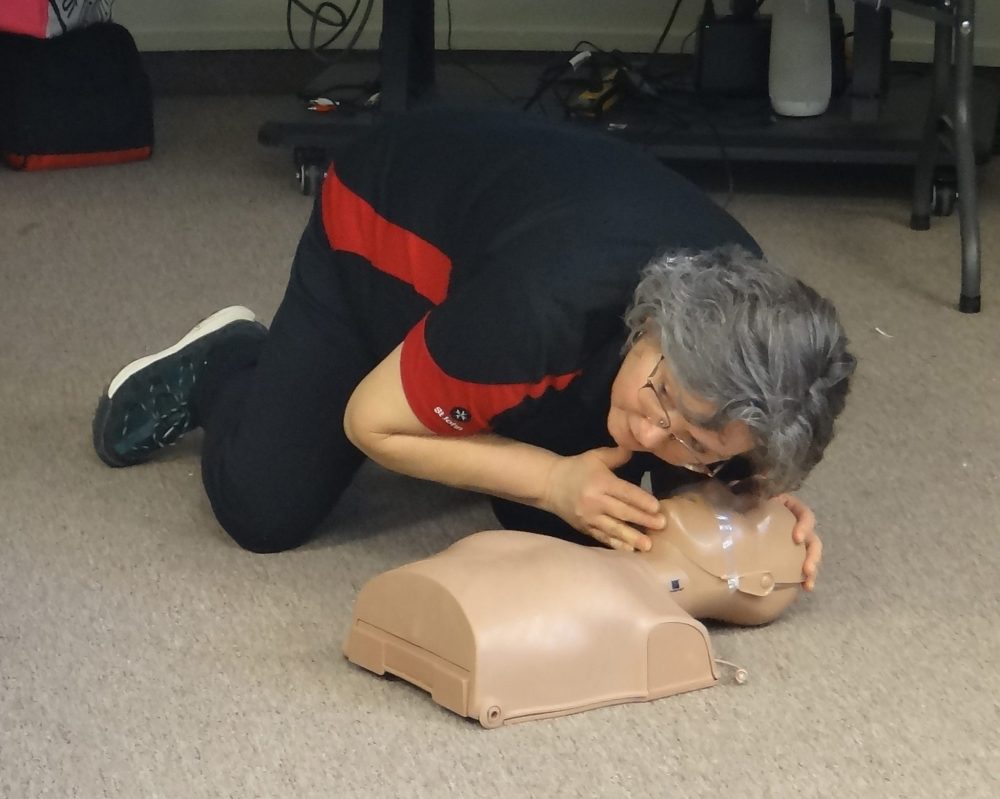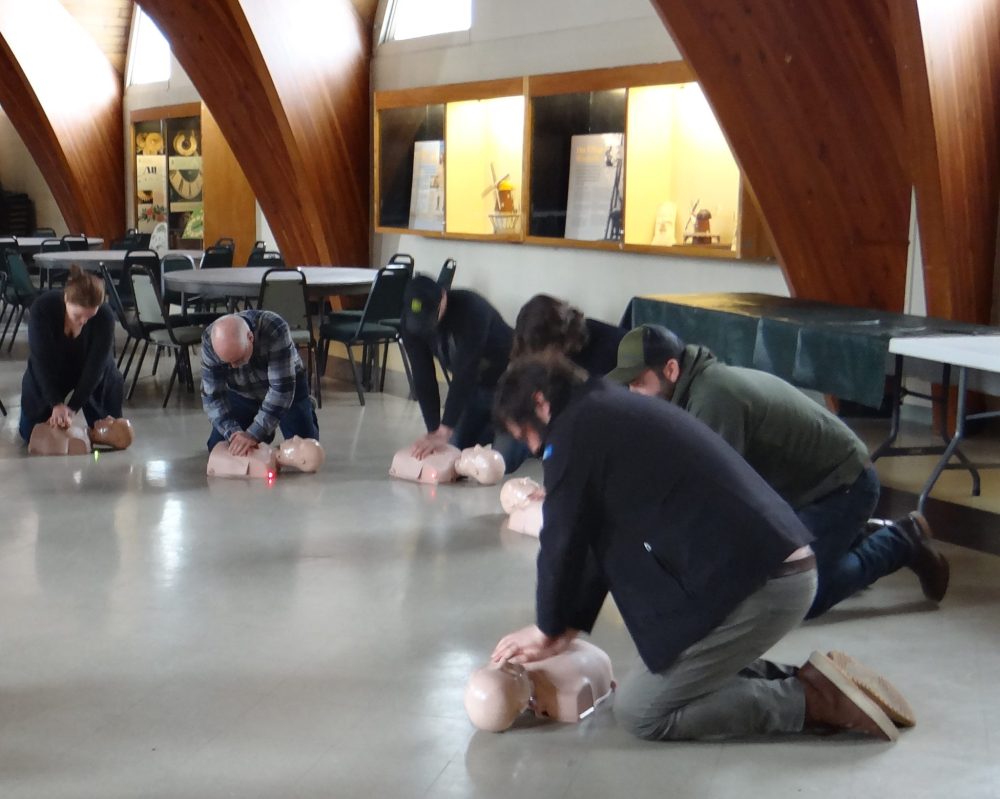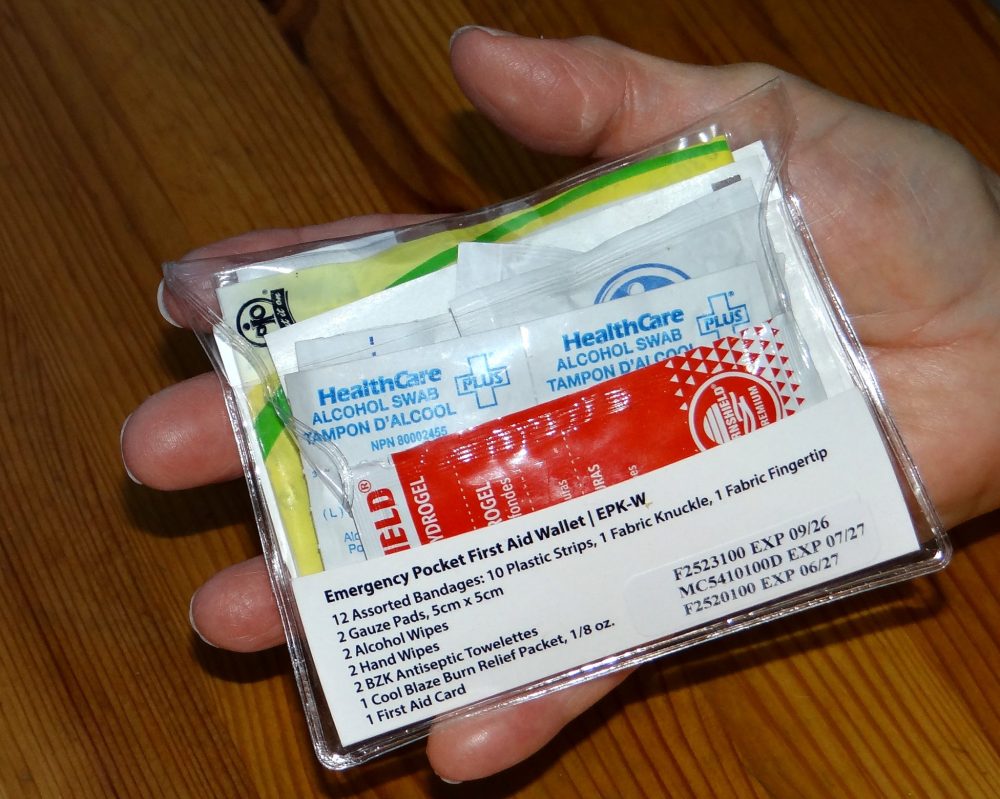Rural communities focus of St John first aid course
Advertisement
Hey there, time traveller!
This article was published 03/05/2024 (189 days ago), so information in it may no longer be current.
St John Ambulance instructors are currently presenting a series of one-day first aid courses designed especially for Manitoba farmers and others who live and work in rural communities. The course, supported by Keystone Agriculture Producers and Manitoba Canola Growers, gives each class of 18 participants the skills needed to deal with life-threatening emergencies and more common non-emergency farm-related injuries.
Before beginning instruction at the course at the Mennonite Heritage Village Museum, in Steinbach, Colleen Robinson and the group discussed how to best deal with problems that arise when calling 911 from rural areas, where the service is often patchy at best and non-existent in other areas. Often dispatchers have no end of difficulty in dealing with calls from rural residents and, a person under the stress of an emergency, cannot always give clear directions to the operator, who may be located in an urban centre.
The precise location may not always be clear, Robinson was told, and dispatchers may have difficulty in knowing from what location emergency services must be dispatched. Robinson suggested rural residents would be wise to have the numbers of the local fire department and ambulance services readily available in the event of an emergency.

A handy wallet-sized first aid package, provided by Manitoba Canola Growers, contains a card on which to record numbers for police, ambulance, fire, local hospital and poison control centre. The little package, measures less than four inches square and also contains a dozen assorted bandages, gauze pads, two alcohol wipes, two hand wipes, antiseptic towelettes and a cool blaze burn relief packet. In an emergency, it would be beneficial to call the local numbers as well as reaching out to 911, Robinson said.
Local emergency services are most familiar with the areas they serve and that could speed up the arrival of help. In the meantime, there are several steps that can be taken by someone arriving on the scene of a farm accident or any other medical emergency. Many of those would be dealt with during the day, Robinson added.
“Pre-planning for an emergency is very important. Know what to do when something happens. Know where your co-workers are likely to be and how long they expect to be at that location, be it in a machine shed or out on the land.”
Robinson took the group through a step-by-step approach to assisting someone who has suffered a heart attack or an on-the-job injury.
Always check for hazards when approaching a casualty, she said. There may be something that caused an accident, like a ladder in the case of a person being injured in a fall. If the person is conscious, ask for consent to help them. Then call 911 and get started with on-site treatment as soon as possible.
Do a rapid body survey to check if the victim is going into shock. Shock is caused by a circulation problem when tissues do not get enough oxygenated blood, Robinson explained.
“Shock causes a chalky appearance to the skin and can happen with any illness or injury. Shock is progressive and always needs first aid.”

Shock will cool sweat glands and the heart rate increases as the body attempts to make sure blood gets to vital organs.
“In that little first aid package there is something that looks like a piece of tinfoil, but is actually a blanket which works well for keeping a person warm until professional help arrives.
Using a mannequin, provided for each of the students, Robinson demonstrated how to check the breathing of a person lying on their back. In the event the person is face-down, use the back of your hand to check breathing before moving them. If there is no breath for six or seven seconds, start cardiopulmonary resuscitation (CPR).
Robinson, with volunteers from the group to help, demonstrated how to safely turn the victim on his or her side, when necessary, being careful to support the head at all times, in case there was a neck injury.
Robinson then demonstrated CPR, using the mannequin to show how hands should be positioned on a person’s chest before beginning a series of compressions to get breathing started again.
When dealing with a possible heart attack or a person who is in shock for any number of reasons, it is important to keep the heart beating. CPR is a way to do that.
CPR is a combination of chest compressions, just over two inches deep, which are delivered rapidly, at the rate of 100 to 120 compressions a minute. Robinson said.

Somebody suffering a heart attack needs an ambulance to be taken to the hospital and CPR at the site is done to keep the heart going until further help arrives.
“Rapid compressions, two minutes at a time, are gruelling, but the adrenalin you will have while helping the victim will keep you going.”
An automated external defibrillator (AED) is a valuable device which increases a person’s chance of survival from heart failure by 70 to 80 percent. Ambulances have them, Robinson said, but recommended rural residents have one on hand as well, even though they are expensive.
An AED is a computerized device for analyzing heart rhythm of a casualty and providing an electric shock to disrupt an erratic rhythm and restore a normal one.
The AED is able to identify if the heart rhythm fits one of two shockable rhythms and will ignore other rhythms, and a voice prompt will advise to perform CPR.
Kneeling in a circle on the floor of the Mennonite Heritage Museum auditorium, the 18 course participants followed the instructions from Robinson for performing CPR on their mannequins and the three step-process for using the AED.
Step One is to open the AED and turn on the device. Step Two is to follow the voice prompts to apply the pads as instructed in the accompanying illustration. Step Three is waiting for the AED to analyze once the pads are in place and voice prompts indicate whether to press the orange shock button or to continue CPR.

“Do not touch the patient after pushing the orange button when the voice indicates a shock is advised. Then its hands off and listening to directions from the device and resuming CPR if told to do so.”
A series of videos and the hands-on CPR and AED use, as well as the treatment of sprains, fractures, broken bones, and wound care were all part of the full day St John Ambulance course.
The afternoon session included child CPR, touched on silo gas and safety measures where it could be in a bin, and treatment of burns from chemicals farmers work with.
At the end of the day, course participants were certified as “First Aider 1” under the Manitoba Workplace Safety and Health legislation, with certification valid for three years.
